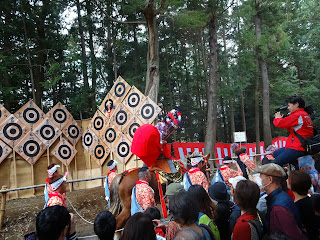
The Noto Peninsula, facing the Japan Sea, is one of the places you can go and see old Japan. This peaceful place is full of wild coastlines and little fishing villages. The rampant concrete development so visible in the rest of Japan is largely absent.
 A highlight is the most northern town of Wajima. It features one of largest daily markets in Japan. Staffed mainly by a swarm of chatty grannies who gossip and enjoy the morning sun while try to persuade you that their sea urchins are the best.
A highlight is the most northern town of Wajima. It features one of largest daily markets in Japan. Staffed mainly by a swarm of chatty grannies who gossip and enjoy the morning sun while try to persuade you that their sea urchins are the best.
The market winds through the streets, as in a French town, and a huge variety of local produce is available.

Squid, scallops and conch shell freshly grilled make a great breakfast snack.

Here the famous Venus de Granny.
A now abandoned art gallery providing a strange contrast to the surrounds.
 There is a great tradition of a special sort of Taiko drumming as well. The troup in this
There is a great tradition of a special sort of Taiko drumming as well. The troup in this village are world famous. Long ago when they were threatened with an invading army the fishermen dressed themselves with wooden masks and seaweed hair and drummed in the forests all night. The appearance of these "ghosts" scared the invaders away.
I've seen Taiko drumming before and frankly could take it or leave it. This however was something very special.
The area around Wajima is also one of the few places in country where salt is made in the traditional way. In the past the locals were too poor to provide rice to the authorities as taxation, so salt was used instead. This naturally produced salt is very good, and now very expnsive.

The seafood is exquisite and very cheap and of course as fresh as is humanly possible.






















































